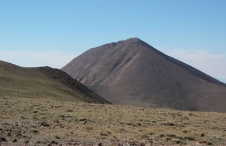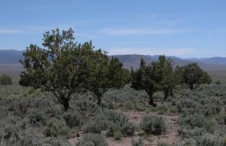Great Basin Bristlecone Pine
The Great Basin bristlecone pine (Pinus longaeva) Nevada's state tree, includes the oldest living trees in the world (maximum recorded age of 5,062 years as of 2013). This species is characteristic of the subalpine zone in some Great Basin mountain ranges where it is the dominant tree species along with limber pine (Pinus flexilis). Present in many of the high ranges of Eastern Nevada, it is absent from most of Central Nevada west of the Monitor Range and from the northern ranges. Although the tree is widely distributed across an elevation of 6,760–11,600 feet, the oldest trees are found in harsh, high-elevation environments in the White Mountains and the Snake Range. Excellent hikes can be taken through ancient groves of this species in Great Basin National Park.
Bristlecone pine is famous for its gnarly, twisted, contorted growth forms. Slow growth of the resinous wood causes its resistance to insects and disease, while the stressful environments where it grows limit the potential for wildfire spread, thus allowing this species to reach great ages. The oldest trees adopt a "strip-bark" growth form in which narrow strips of living inner bark carry water to the surviving branches and return nutrients to the roots. The great majority of the tree is, in fact, dead, provoking Ronald Lanner, an authority on the bristlecone pine, to point out that the question is not why these trees "live so long," but why they "take so long to die."
In addition to their aesthetic value, bristlecone pines have made a major contribution to our scientific understanding of historical climate conditions. Using dendrochronology, it is possible to compare tree rings of living trees with those of dead trees that have persisted for millennia as snags or logs in these high-elevation environments. In this way, tree-ring chronologies have been reconstructed that provide information about historical climates dating to earlier than 6000 B.C.
Article Locations
Related Articles
Further Reading
None at this time.



